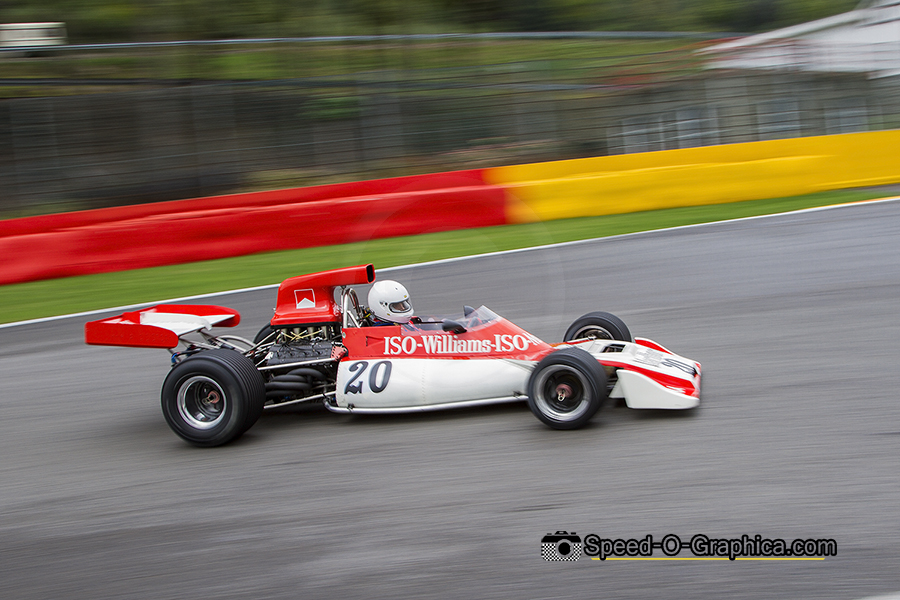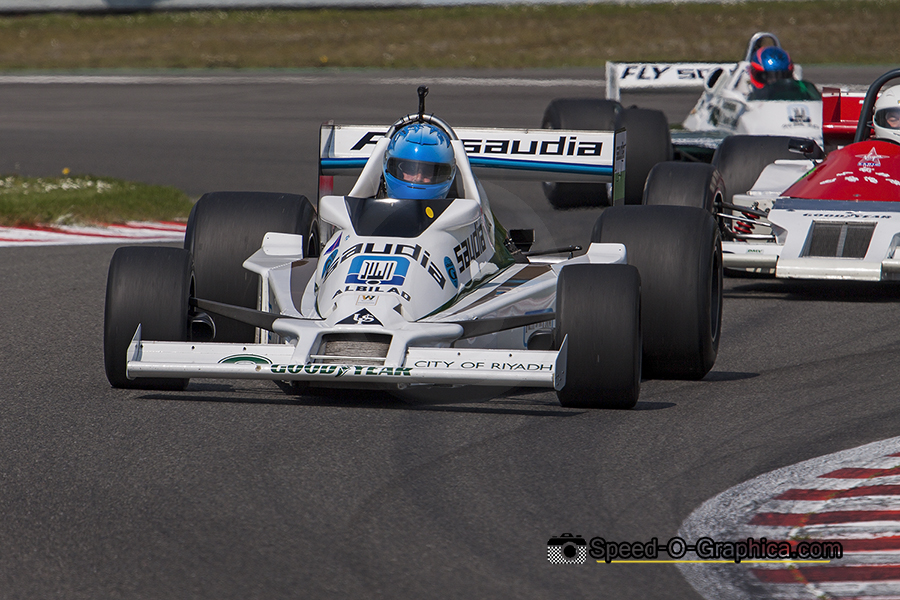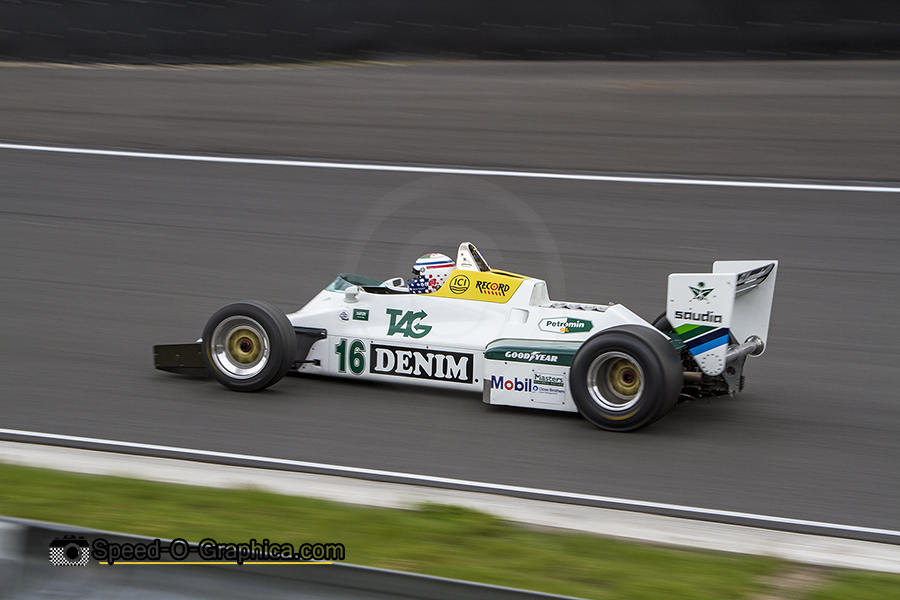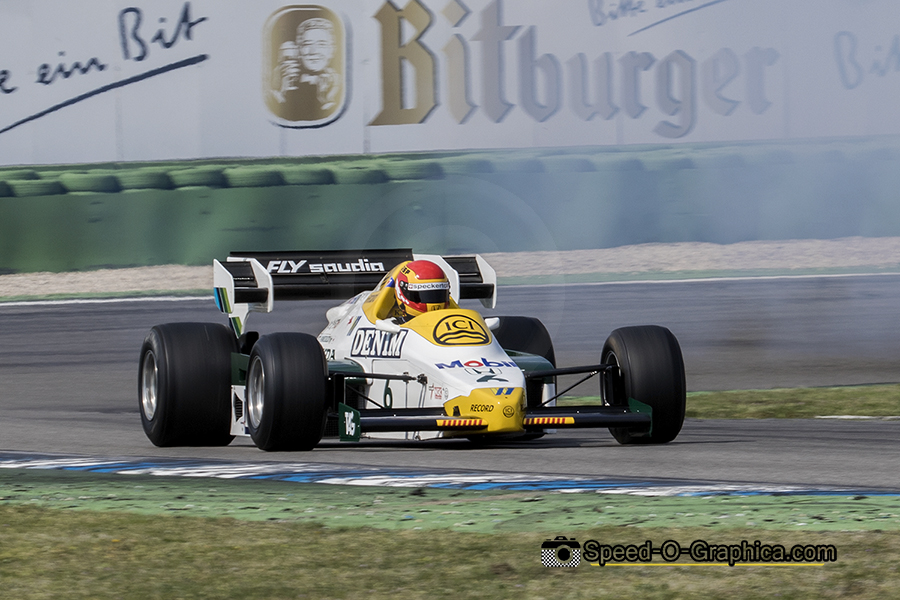Looking Back on Frank Williams’ Legacy

By Marcel Hundscheid / Speed-O-Graphica
Two weeks ago, the motorsport world was rocked by the sad news that Formula 1 legend Frank Williams had passed away. Williams has left an indelible mark at the pinnacle of motorsport, so in this article we look back on the life of the ‘Iron General’.
Williams’ first steps into the world of motorsport started with the sale and trade of used racing car accessories and continued with the establishment of its own racing team in 1966 under the name Frank Williams (Racing Cars). After purchasing a Brabham BT26 in 1969, he ran the car for his good friend Piers Courage. The Briton finished second in both the Monaco Grand Prix and the US Grand Prix.
Williams decided to switch to an Italian built De Tomaso chassis for 1970. Compared to the Brabham, the De Tomaso proved to be to heavy and unreliable. During the Dutch Grand Prix at Zandvoort in 1970, disaster struck as Courage’s front suspension broke and he was hit by one of the front wheels and died instantly.
Williams lost a dear friend, but despite being devastated he provided a car for Henri Pescarolo in 1971, followed by his first ever car in 1972. It took two attempts for Williams to establish himself in Formula 1 at all. Money worries drove him to merge with Austro-Canadian entrepreneur Walter Wolf for the first time, and ultimately out of his own racing team. He created Williams Grand Prix Engineering with Patrick Head (70%-30%) and returned in 1978 at the Spanish Grand Prix with a customer March chassis.

Williams FW06 / Abba Kogan / RMU Classic Spa 2010
The FW06 for the 1978 season was the first self-built Williams chassis designed by Patrick Head. The car was powered by a Cosworth DFV 3.0 V8 engine and Australian Alan Jones debuted the car at the 1978 Argentine Grand Prix. Williams acquired major sponsorship from Saudia Arabian Airlines and TAG.
Throughout the season the FW06 finished in the points during three races. Due to the sponsorship, Head could develop the FW06 furthermore. Williams finished ninth in the constructors’ championship.
Swiss driver Clay Regazzoni gave the British team its first victory at the British Grand Prix in 1979, driving a Williams FW07. Patrick Head and Frank Dernie designed the car, in fact a ground effect car that was closely based on the Lotus 79. Williams debuted the car at the Spanish Grand Prix at Jarama that year. As Alan Jones suffered from technical issues in Spain, Belgium and Great Britain, it was his team mate Regazzoni that drove the FW07 to its maiden victory.
Alan Jones gave Williams the first world drivers’ title in 1980, as well as the first constructors’ title. Williams presented the revolutionary FW07D six-wheeler in 1982 based on the FW07. The car acted as a prototype using another rear axle to a regular FW07 to have four driven rear wheels. Alan Jones tested the car in 1982 at Donington, followed with tests at Silverstone and Croix-en-Ternois in France. As it turned out that Jonathan Palmer drove the same lap times in the four-wheeled FW08, it was decided to continue the programme with a modified FW08, resulting in the six-wheeled FW08B. Just like the FW07D, the FW08B never raced.

Williams FW07/C / Christophe d’Ansembourg / RMU Classic Spa 2009
The FW08, designed by Frank Dernie, debuted in 1982 at the Belgian Grand Prix in Zolder and featured a shorter wheelbase and stiffer chassis than its predecessor. Keke Rosberg drove the car to victory in the Swiss Grand Prix held in Dijon-Prenois that year, in fact his single victory in 1982. Rosberg managed enough points due to four podium finishes to give Williams the world Drivers’ championship in 1982.
1986 was a dramatically black year for the team as Frank Williams was seriously injured in an accident in a road car near Paul Ricard in the south of France. It would leave him permanently in a wheelchair, but it did not slow his efforts in the sport. Williams launched the FW11B in 1987 designed by Sir Patrick Head and Frank Dernie, a car that would rule the World Championship that year.
The FW11B was an upgraded and more reliable version of the FW11 featuring a lighter and less complicated suspension. Nelson Piquet gave Williams a fourth constructors’ title in 1987, at the same time claiming his first drivers’ title.

Williams FW08C / Richard Barber / Historic Grand Prix Zandvoort 2020
Williams broke through McLaren’s dominance in 1991 with the Williams-Renault FW14. Although this car was the fastest from mid-season, Nigel Mansell had to acknowledge the superiority of the McLaren of Ayrton Senna. Briton Nigel Mansell claimed his single world championship title in 1992 driving a FW14B.
Williams introduced the FW15C in 1993, which featured active suspension and traction control. The car would dominate the season resulting in the 1993 constructors’ title and a fourth drivers’ title for Alain Prost. The Williams success story was overshadowed by the tragic accident of Ayrton Senna during the 1994 San Marino Grand Prix at Imola.
Damon Hill gave Williams their eighth constructors’ title in 1996, driving a FW18. Besides this he claimed his first drivers’ championship. Jacques Villeneuve took his first and only drivers’ title in 1997. At the same time it was the ninth constructors’ title for Williams. Williams has been BMW’s exclusive partner since 2000. With this, the last great successes of the team were achieved. A few wins and a handful of second and third places in the championship are the best results for the British team.
Williams had a brief revival in 2014 and 2015. The Mercedes engine turned out to be the most powerful hybrid engine. However, the engine was ahead of the chassis, and when it slowly lost its advantage, Williams dropped back into the final standings.
For close to six decades, Frank Williams made his mark at the highest level of motorsport and contributed to many of the stories that have made the sport great through its years. He will be much missed, and never forgotten.

Williams FW09 / Jo Vonlanthen / Bosch Hockenheim Historic 2018
